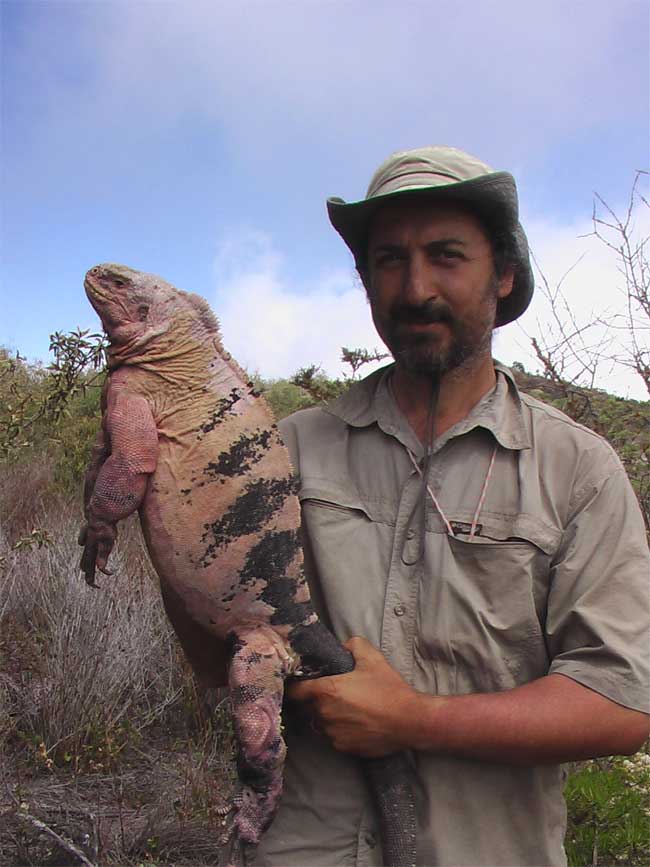Rare Pink Iguana Eluded Darwin and Others

A pink iguana species living near a volcano on the Galápagos Islands remained hidden from Charles Darwin and others until recently.
Darwin had an excuse: "That Darwin might have missed this form is not surprising, because he stayed in the Galápagos only five weeks, and he did not visit Volcan Wolf [volcano], which to our knowledge is the only place on the archipelago where the pink form occurs," said lead researcher Gabriele Gentile of the University Tor Vergata in Rome, Italy. "What is surprising is that several other scientists visited in the last century Volcan Wolf and missed this form."
The pink iguana, which may reach a length of more than 3 feet (more than 1 meter), lives exclusively along that volcano on the island of Isabela.
More than 100 years after Darwin's visit, in 1986, Galápagos National Park rangers stumbled upon the pink iguana, but the sighting garnered little attention until now.
"We are the first to document the existence of this form and recognize this form as a new species," Gentile said of his research that will be detailed this week in the journal Proceedings of the National Academy of Sciences.
The Galápagos Islands (called an archipelago) are located off the western coast of South America in the Pacific Ocean. There, animal species were able to evolve isolated from other mainland creatures, leaving a legacy of oddball characters from giant tortoises to tropical penguins.
Gentile and his colleagues analyzed DNA from blood collected from 36 of the pink iguanas. The genetic sequences of the pink reptiles were much different than those of the island's yellow land iguanas, Conolophus pallidus and Conolophus subcristatus. The genetic results suggest the pink iguanas diverged from the yellow ones about 5.7 million years ago.
Get the world’s most fascinating discoveries delivered straight to your inbox.
"This event is one of the oldest events of diversification among species in the Galápagos overall," Gentile told LiveScience. "The Darwin finches are thought to have differentiated later than the split between the pink and yellow iguana lineages."
The researchers think the iguana species can mate with one another to produce viable babies, though they suggest the pink-yellow mating is rare as they found just one yellow iguana with genetic material pointing to a pink grandfather.
- Images: Darwin on Display
- How the Galápagos Islands Changed the World
- Science News and More on Evolution
Jeanna Bryner is managing editor of Scientific American. Previously she was editor in chief of Live Science and, prior to that, an editor at Scholastic's Science World magazine. Bryner has an English degree from Salisbury University, a master's degree in biogeochemistry and environmental sciences from the University of Maryland and a graduate science journalism degree from New York University. She has worked as a biologist in Florida, where she monitored wetlands and did field surveys for endangered species, including the gorgeous Florida Scrub Jay. She also received an ocean sciences journalism fellowship from the Woods Hole Oceanographic Institution. She is a firm believer that science is for everyone and that just about everything can be viewed through the lens of science.
